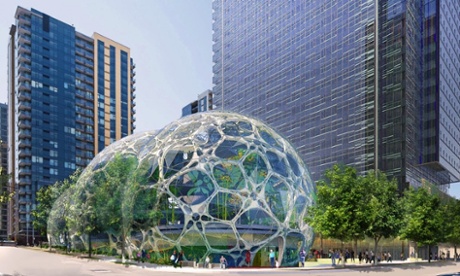I often told myself in adolescence that, even though I’d had to grow up in a none-too-exciting Seattle suburb, at least my particular none-too-exciting Seattle suburb boasted the headquarters of both Microsoft and Nintendo of America. Though I had to ride my bike for the better part of an hour to reach so much as a grocery store, at least I could feel, or imagine I felt, the buzz of thrilling new computer and entertainment technologies in development not far away.
Nintendo established its Redmond, Washington campus in 1982; Microsoft moved its headquarters there in 1986. Both years fall squarely within the late stage of America’s long period of suburbanisation, when people and corporations alike pulled their stakes up from the country’s once-robust city centres and put them down in far-flung suburbs like Redmond, which back in the 1980s turned nearly rural at its edges. Taking my thrills where I could find them in such an environment, I seized every opportunity to visit their leafy compounds.
I still remember the awe I felt upon entering these tightly secured, painstakingly landscaped worlds-unto-themselves. They looked intent on addressing their employees’ every need, thereby absolving them of the obligation to stray from campus. Many a story circulated of life at Microsoft headquarters, where programmers would supposedly keep themselves awake and coding on deadline for days at a stretch with endless company-supplied cafeteria meals and bottles of Jolt Cola. (Douglas Coupland would satirise this cutting-edge-yet-womblike environment of dependency in his 1995 novel, Microserfs.)
Microsoft and Nintendo’s decision to base themselves 15 miles east and across a lake from the city, to say nothing of aerospace giant Boeing’s presence more than 20 miles to the north, did little to benefit Seattle proper. With the region’s economic powers so far out on the periphery, the downtown area fell to what looked like a subservient position before its own suburbs: in parts strangely underdeveloped, in others almost forgotten.
The city’s now-fearsome internet retail pioneer, Amazon.com , might well have continued this saga of corporations key to Seattle’s identity maintaining a distance, and detachment, from the city itself, had it stayed in the even wealthier suburb of Bellevue where the company began (in chief executive Jeff Bezos’s converted garage). Instead, the decision to consolidate much of its headquarters right up against Seattle’s downtown, in a former car-dealer-and-warehouse district called South Lake Union (the lake separates the city’s north and south halves), has engendered a fascinating case study, still very much in progress, of what happens when a powerful company goes about ambitiously building an environment not away and sealed off from the nearest urban centre, but right there in it – and even, to an extent, integrated with it.
Read the whole thing at The Guardian Cities.

Post a Comment